How to Build a DIY Terrarium: Step-by-step Guide for Creating a Miniature Ecosystem
Have you ever wanted to create your own miniature ecosystem? A terrarium is a perfect way to do just that! Not only do they look stunning, but they are also relatively easy to make and require minimal maintenance. In this step-by-step guide, we will show you how to build your own DIY terrarium.
What is a Terrarium?
A terrarium is a small, enclosed environment that is designed to mimic a natural habitat. It can be made in a variety of sizes and shapes, and can contain a range of different plants and other natural elements. A terrarium is essentially a miniature garden that can be enjoyed indoors.
What are the Benefits of a Terrarium?
- Low Maintenance: Terrariums require minimal watering and maintenance compared to other types of indoor plants.
- Improves Air Quality: Plants in a terrarium help to purify the air, making it healthier to breathe.
- Decorative: A terrarium can add a unique and decorative touch to any room in your home.
What You Will Need
Before you get started, you will need a few supplies:
- A container (such as a glass jar or vase)
- Potting soil
- Activated charcoal
- Pebbles or small rocks
- Moss or sand (optional)
- Plants
- Decorative elements (such as figurines or stones)
With these supplies in hand, you are ready to start building your own DIY terrarium. Let’s get started!
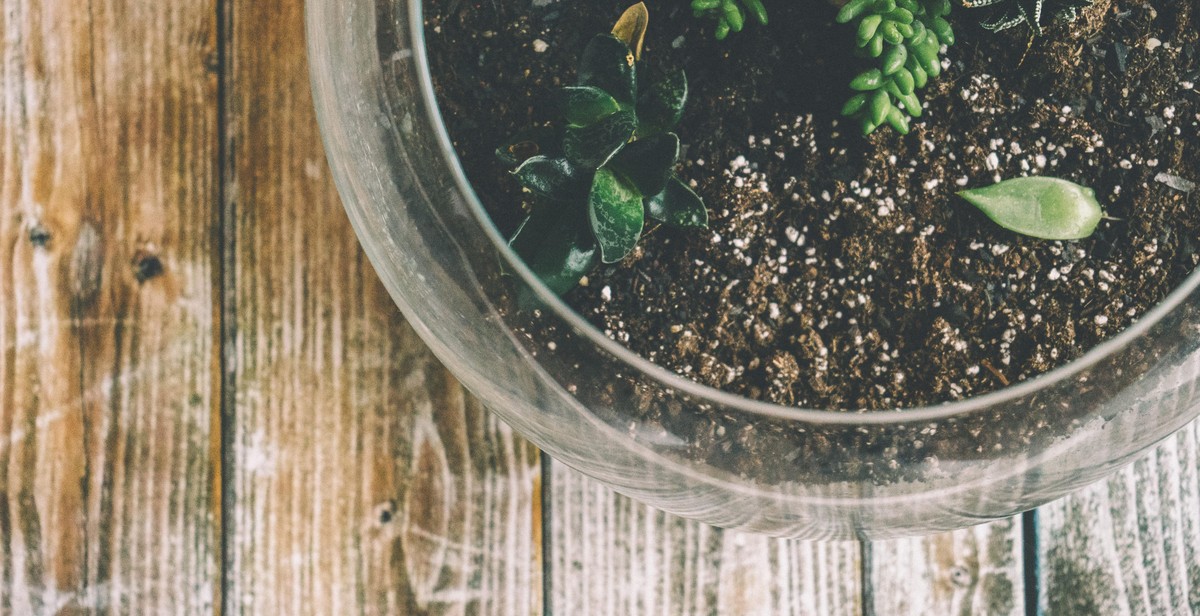
What is a Terrarium?
A terrarium is a miniature ecosystem in a glass container that allows plants to grow and thrive in a controlled environment. It is essentially a self-sustaining garden that requires minimal maintenance and can be placed anywhere in your home or office.
History of Terrariums
Terrariums have been around since the 19th century and were first created by botanist Nathaniel Bagshaw Ward. He stumbled upon the idea of creating a self-sustaining ecosystem while studying moths and caterpillars in a closed jar. He noticed that the plants in the jar continued to grow and thrive without any external input, leading him to create the first terrarium.
Since then, terrariums have become popular home decor items and are available in various shapes and sizes, from small desktop versions to large floor-standing models.
Benefits of Terrariums
There are several benefits to having a terrarium in your home or office:
- Low maintenance: Terrariums require very little maintenance and can go weeks without watering.
- Improves air quality: Plants in a terrarium absorb carbon dioxide and release oxygen, improving air quality in your home or office.
- Adds a decorative element: Terrariums are visually appealing and can add a unique decorative element to any space.
- Reduces stress: Studies have shown that being around plants can reduce stress and anxiety levels.
- Encourages creativity: Building and maintaining a terrarium can be a fun and creative hobby that allows you to express your artistic side.
In conclusion, a terrarium is a miniature ecosystem in a glass container that has been around for centuries. It requires minimal maintenance and provides several benefits, including improving air quality, reducing stress, and adding a decorative element to your space.
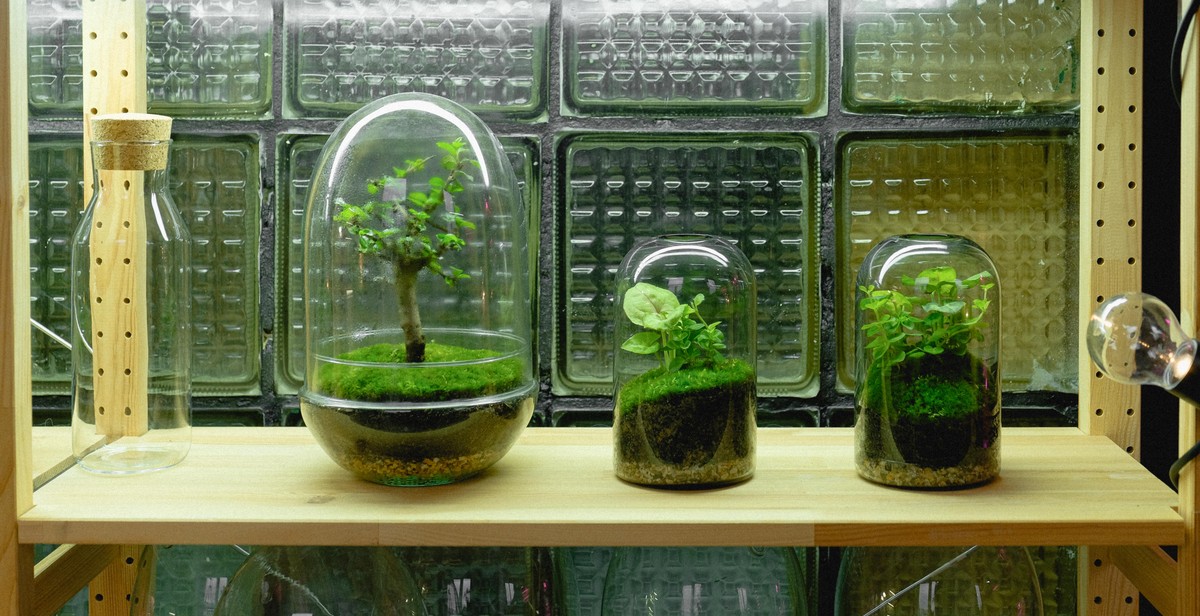
Choosing the Right Container
When it comes to building a DIY terrarium, choosing the right container is crucial. Here are some factors to consider:
Size and Shape
The size and shape of the container will determine the size and number of plants you can include in your terrarium. A larger container will allow for more plants and a more diverse ecosystem, while a smaller container may require more maintenance.
The shape of the container is also important. A tall, narrow container will allow for a more vertical arrangement of plants, while a wider, shallow container may be better for a more sprawling arrangement.
Material
The material of the container will affect the moisture levels inside the terrarium. Glass containers are the most popular choice because they are transparent, allowing for easy viewing of the plants. However, plastic and ceramic containers can also be used.
It is important to note that metal containers should not be used for terrariums, as they can rust and affect the moisture balance.
Lid or No Lid
Whether or not to include a lid on your terrarium is a personal preference. A lid will help to trap moisture and create a more humid environment, which is beneficial for certain plants. However, a lid may also restrict airflow and cause the terrarium to become too humid, leading to mold or rot.
If you choose to include a lid, make sure to monitor the moisture levels and remove the lid periodically to allow for airflow.
| Factors to Consider | Options |
|---|---|
| Size and Shape | Small, medium, or large; tall and narrow or wide and shallow |
| Material | Glass, plastic, or ceramic |
| Lid or No Lid | Lid for more humidity or no lid for more airflow |
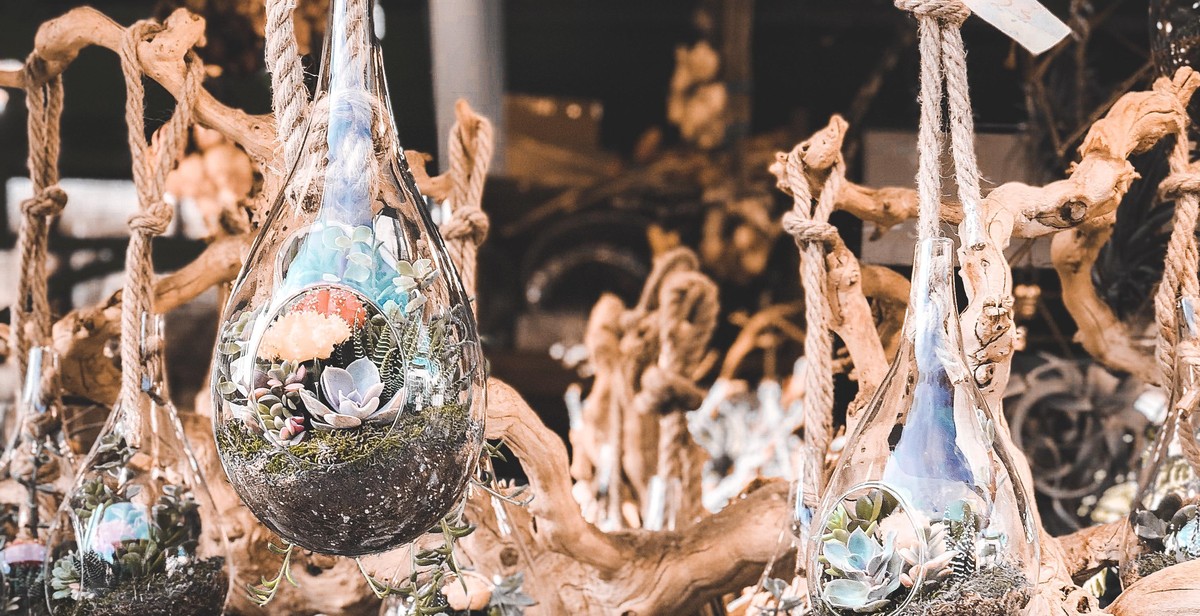
Selecting the Right Plants
Choosing the right plants for your terrarium is essential for creating a healthy and thriving miniature ecosystem. Consider the following factors when selecting your plants:
Types of Plants
There are three types of plants that are commonly used in terrariums:
- Tall Plants: These plants add height to your terrarium and are usually placed at the back. Examples include ferns, palms, and snake plants.
- Medium Plants: These plants fill the middle ground of your terrarium and can be placed in front of tall plants. Examples include fittonia, peperomia, and begonias.
- Ground Cover Plants: These plants cover the soil and create a lush carpet effect. Examples include mosses, baby tears, and creeping fig.
Light Requirements
Plants have different light requirements, and it’s essential to choose plants that will thrive in the amount of light your terrarium receives. Here are some examples:
| Light Requirements | Plants |
|---|---|
| Low Light | Snake plant, pothos, ferns |
| Medium Light | Fittonia, peperomia, begonias |
| Bright Light | Succulents, cacti, air plants |
Soil and Water Needs
Plants require the right type of soil and water to thrive in a terrarium. Here are some tips:
- Soil: Choose a well-draining soil mix specifically designed for terrariums. Avoid using regular potting soil, as it can hold too much moisture and lead to root rot.
- Water: Overwatering is a common mistake in terrariums. Only water your plants when the soil is dry to the touch. Use a spray bottle to mist the plants and soil lightly.
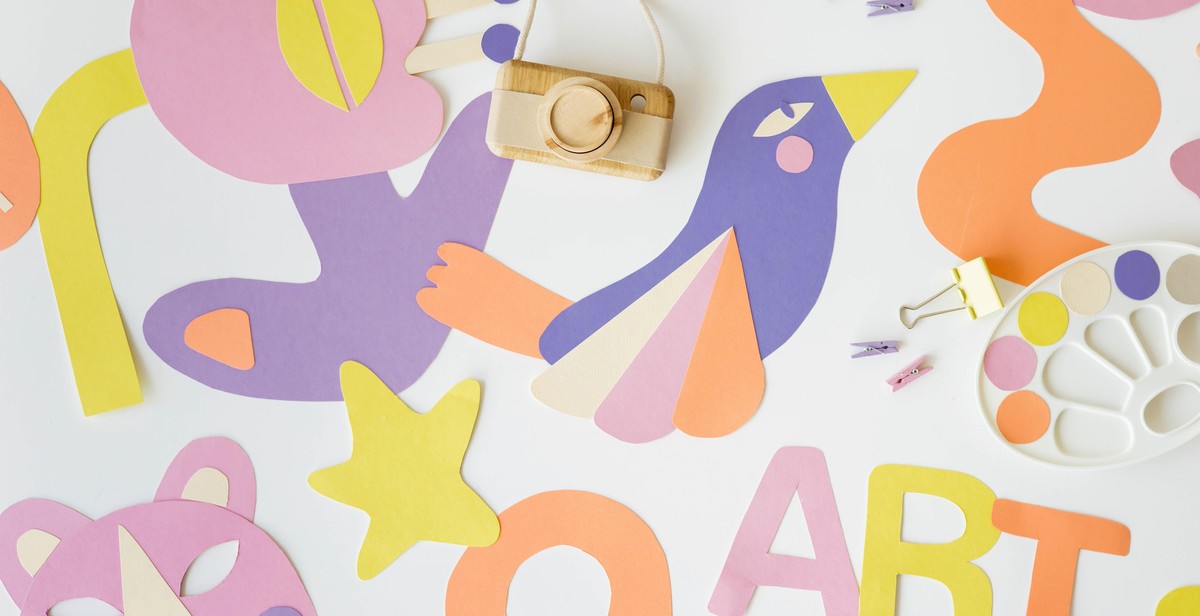
Creating the Terrarium
Creating a terrarium is a fun and easy way to bring a miniature ecosystem into your home. Follow these simple steps to create your own DIY terrarium:
Step 1: Add Drainage Layer
The first layer of your terrarium should be a drainage layer to prevent water from accumulating at the bottom and causing root rot. You can use rocks, pebbles, or activated charcoal for this layer. Be sure to add enough to cover the bottom of the container, but not so much that it takes up too much space.
Step 2: Add Activated Charcoal Layer
Activated charcoal is an important layer that helps keep the terrarium clean and free of odor. It also helps to absorb excess moisture and prevent mold growth. Add a thin layer of activated charcoal over the drainage layer.
Step 3: Add Potting Soil Layer
The potting soil layer is where you will plant your terrarium plants. Choose a high-quality potting soil that is suitable for your plants. Add enough soil to cover the charcoal layer and provide a good planting medium for your plants.
Step 4: Add Plants and Decorations
Now it’s time to add your plants and decorations to your terrarium. Choose plants that are suitable for the growing conditions in your terrarium. You can also add decorative elements such as rocks, moss, or figurines to add visual interest.
- Arrange the plants and decorations in a way that looks pleasing to you.
- Be sure to leave enough space between the plants so they have room to grow.
- Water the plants lightly after planting.
With these simple steps, you can create a beautiful and unique terrarium that will be a focal point in any room of your home.
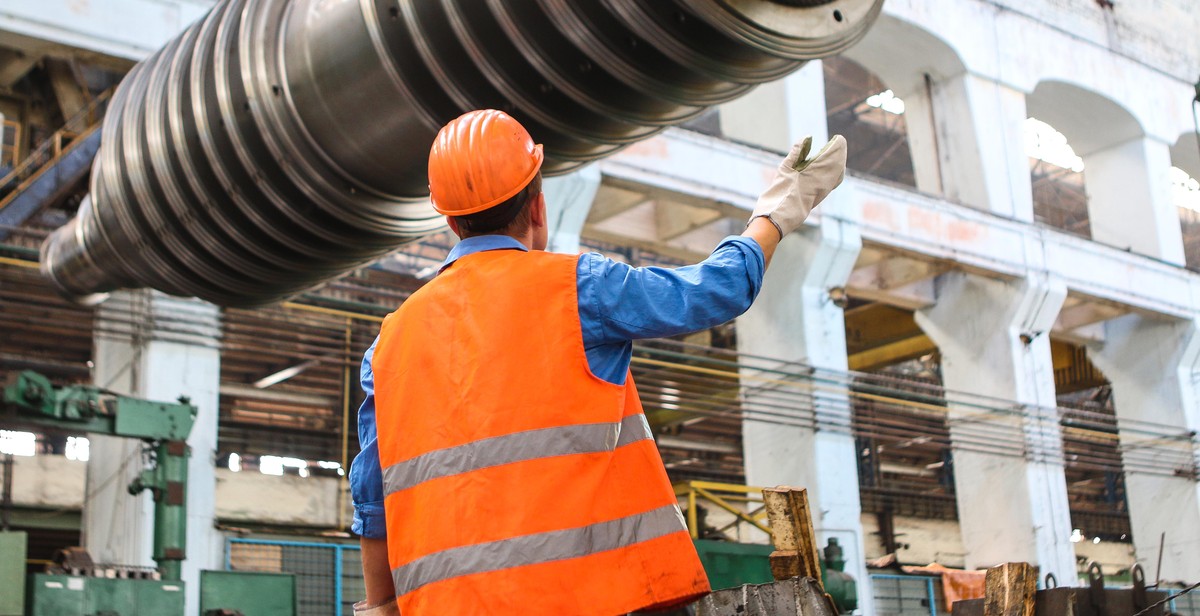
Maintenance and Care
Creating a DIY terrarium is not just about the setup process but also about the maintenance and care required to keep the miniature ecosystem flourishing. Here are some essential tips for taking care of your terrarium:
Watering
Watering is crucial for the survival of the plants in your terrarium. The amount and frequency of watering depend on the size of the terrarium and the type of plants used. Generally, it is recommended to water the terrarium once a week or when the soil feels dry to the touch. Overwatering can lead to root rot and other problems, so be careful not to add too much water.
Pruning and Trimming
Regular pruning and trimming of the plants in your terrarium help to maintain their shape and promote healthy growth. Remove any dead or yellowing leaves, as they can attract pests and disease. Use sharp, clean scissors or pruning shears to avoid damaging the plants.
Cleaning
Cleaning your terrarium is essential for keeping it healthy and attractive. Remove any fallen leaves or debris that may accumulate on the soil surface. Wipe the inside of the glass with a soft cloth or paper towel to remove any dust or condensation. Avoid using harsh chemicals or detergents that can harm the plants or disrupt the delicate balance of the terrarium ecosystem.
| Task | Frequency |
|---|---|
| Watering | Once a week or when soil feels dry |
| Pruning and Trimming | As needed to maintain plant health and shape |
| Cleaning | As needed to remove debris and dust |
By following these simple maintenance and care tips, you can keep your DIY terrarium thriving for months and even years to come.

Conclusion
Building a DIY terrarium is a fun and rewarding project that allows you to create a miniature ecosystem that can thrive in your home or office. With the right materials and a bit of creativity, you can design a terrarium that is both beautiful and functional.
Whether you are a seasoned green thumb or a beginner, this step-by-step guide provides all the information you need to create your own terrarium. By following these simple instructions, you can create a unique and personalized terrarium that reflects your style and personality.
Remember to choose the right plants for your terrarium, based on the amount of light and humidity they require. Also, keep in mind that proper maintenance is key to ensuring the long-term success of your terrarium. Make sure to water and prune your plants regularly, and keep an eye out for any signs of disease or pests.
Overall, building a DIY terrarium is a great way to bring a bit of nature into your home or office, and to exercise your creativity and imagination. So why not give it a try today?
- Choose the right materials and plants
- Follow the step-by-step guide for building your terrarium
- Maintain your terrarium properly for long-term success
- Enjoy the beauty and benefits of your own miniature ecosystem
With these tips and tricks, you can create a stunning and thriving terrarium that will bring joy and tranquility to your life for years to come. Happy terrarium building!
